Remote monitoring during critical corn reproductive stages
Corn tasseling is the reproductive stage of corn where the tassels, which are located on the top of the plant, produce pollen. The tasseling stage is important for both the yield and quality of corn and extra care should be provided that plants are in optimal conditions at this stage. Despite the potential size of the ear already being determined during the previous growth phase, what happens during this period determines the plant’s ability to express the yield potential. The more pollination that occurs the better the eventual yield will be. Corn reproductive stages should be monitored closely by growers.
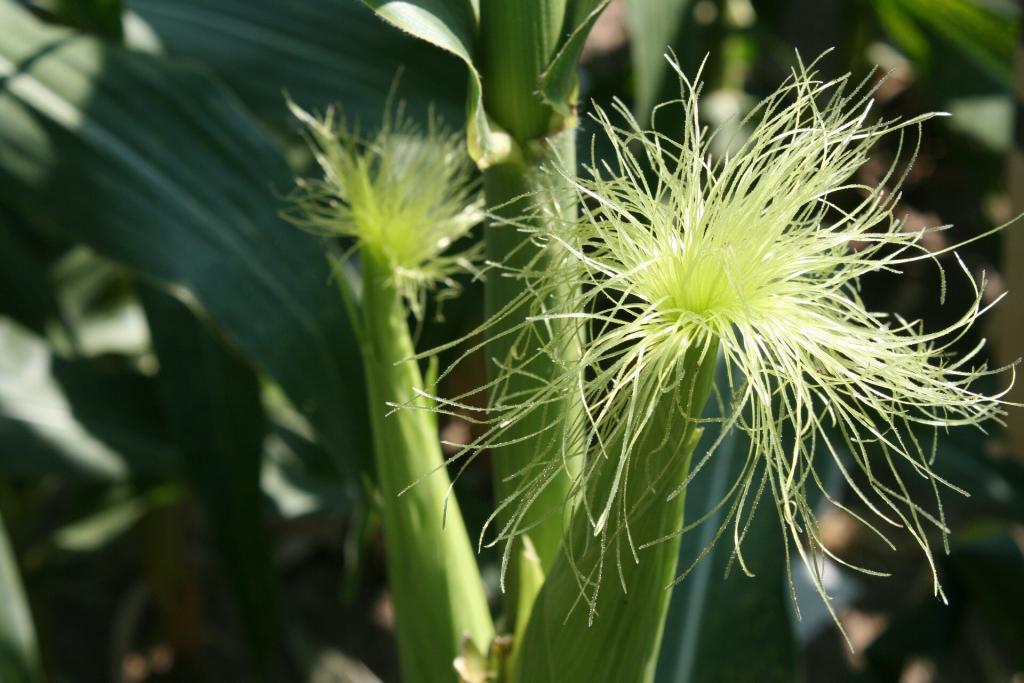
How does satellite imagery help farmers to monitor corn reproductive stages?
The ability to monitor crop progress and spot problems in the field before symptoms are apparent is crucial for a successful harvest. Exciting advancements in technology allow us to capture images of farms around the world with the aid of satellites, thus making monitoring simple and affordable.
In the tasseling phase, the crop is vulnerable to insect infestations and disease outbreaks. This phase lasts between 10 to 14 days and it’s crucial to keep an eye on the crop during this time. With the aid of remote sensing monitoring, we can identify the transition to the tasselig phase very accurately. The accuracy of the analysis is very high if we use satellites that visit the fields on a daily basis as we are able to provide the identification of the phase transition in a few days lag.
To monitor the phase transition we monitor the Leaf area index (LAI). LAI is a measure of leaf surface area per unit of ground area. Corn tasseling prediction based on leaf area index is a technique that uses LAI measurements to estimate when corn will enter its reproductive phase. Monitoring the leaf area index with satellites is a new and innovative way to monitor vegetation. It’s an alternative to traditional methods of monitoring vegetation with ground-based measurement.

Once we identified the phase transition we use the satellite scan to monitor the plant’s health. In the tasseling stage, it becomes crucial to inspect the plants’ health very closely. Any stress at this stage will result in irreversible losses and therefore a fast reaction is important. The high frequency of satellite visits is essential. With satellites that monitor the fields on a daily basis, growers can identify problems in the fields very early and prevent spread. The spatial resolution is important as well, and with a 3-meter scanning resolution, we are able to have a better capability to observe tiny changes in the plants’ health indicators.
Farmers that are using Agrio can monitor the health of their fields in a very simple way. All that is needed is to define the field location by drawing a polygon that represents the field boundary. Once this is done we are kicking in to do constant monitoring for you, and notify you when a new scan is available.
On our platform, you can get access to Sentinel and Planet scope satellite scans. With Sentinel we are able to provide 10-meter resolution scans with 3-5 days revisit frequency. PlanetScope is one of the satellite constellations operated by Planet. With daily revisits and 3-meter resolution, we can better deal with clouds interference and track the changes in the fields more closely. We apply our algorithm to the imagery to monitor crop progress, spot problems in the field, and alert growers when interventions are needed.
When a problem is detected in the scan it is important to go and inspect the plants. In the following, we provide a summary of the main problems that growers and crop advisors can expect to see in the corn reproductive stages.
Corn rootworm
Corn rootworm (Diabrotica balteata, Diabrotica undecimpunctata, Acalymma trivittatum, Diabrotica undecimpunctata howardi) larvae that have been feeding on corn roots will emerge as adults during the time from
tasselling through the silking and pollination period. Unsuccessful control of this pest can result in poor grain fill. The parasitic tachinid fly, Celatoria diabroticae is a good biological control option.
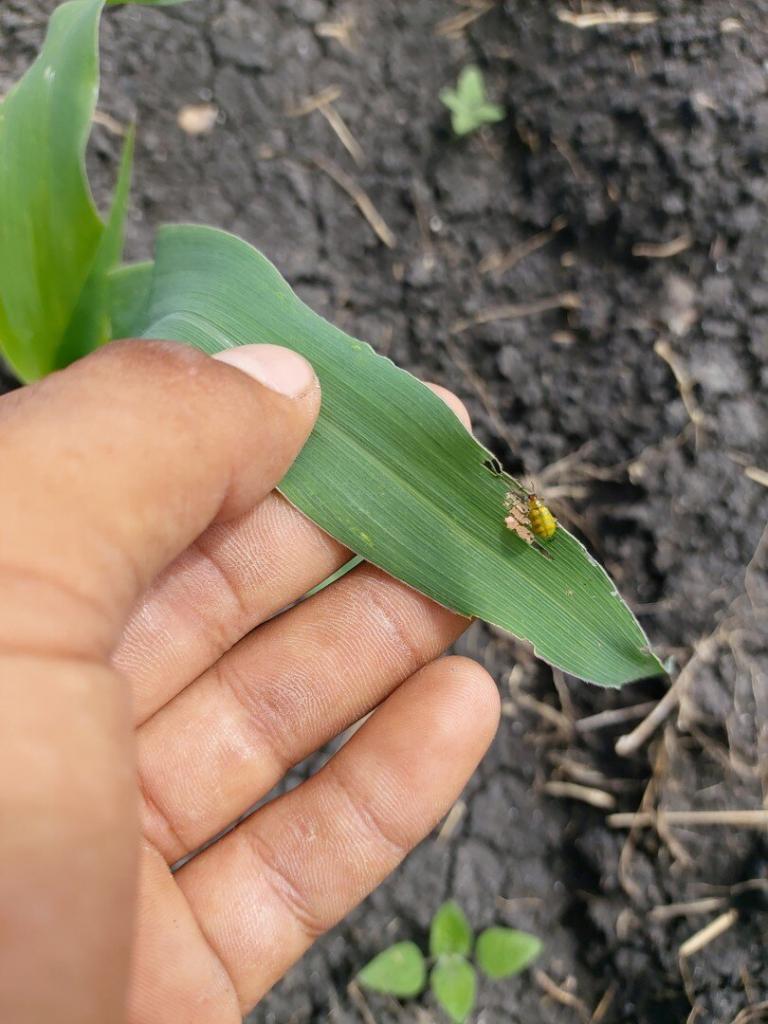
Armyworm
Armyworm can cause significant damage to crops and should be dealt with during the “grain fill” period. Weak plants tend to be stripped by caterpillars before larger, healthier plants. If you see 3-4 or more caterpillars per plant, it might be a good idea to spray insecticides so your crops can reach their full potential.
Prefer planting transgenic plant varieties known as Bt-varieties which have good resistance against this pest. Keep the close surroundings of crops neat by removing weeds, plant debris, damaged parts, unwanted plant growth, and closeby plants that are non-cultivated and unprotected.

European Corn Borer
The European corn borer passes the winter as a full-grown larva in corn stalks and weeds. There is a significant interaction between European Corn Borer and Anthracnose. When both are present, severe stalk damage and lodging can occur. Given the severity of the damages, it might be a good idea to harvest your plants early. This will limit the risk of you ending up with low yields due to your plants getting lodged.

Common rust
Rust as the name implies creates symptoms that are yellow to orange-brown or rust-colored on the top and bottom sides of infected leaves. Symptoms generally do not appear until after tasseling. The disease is caused by the fungus Puccinia sorghi and have easily wind-dispersed spores that put them among the most mobile plant pathogens around the world.
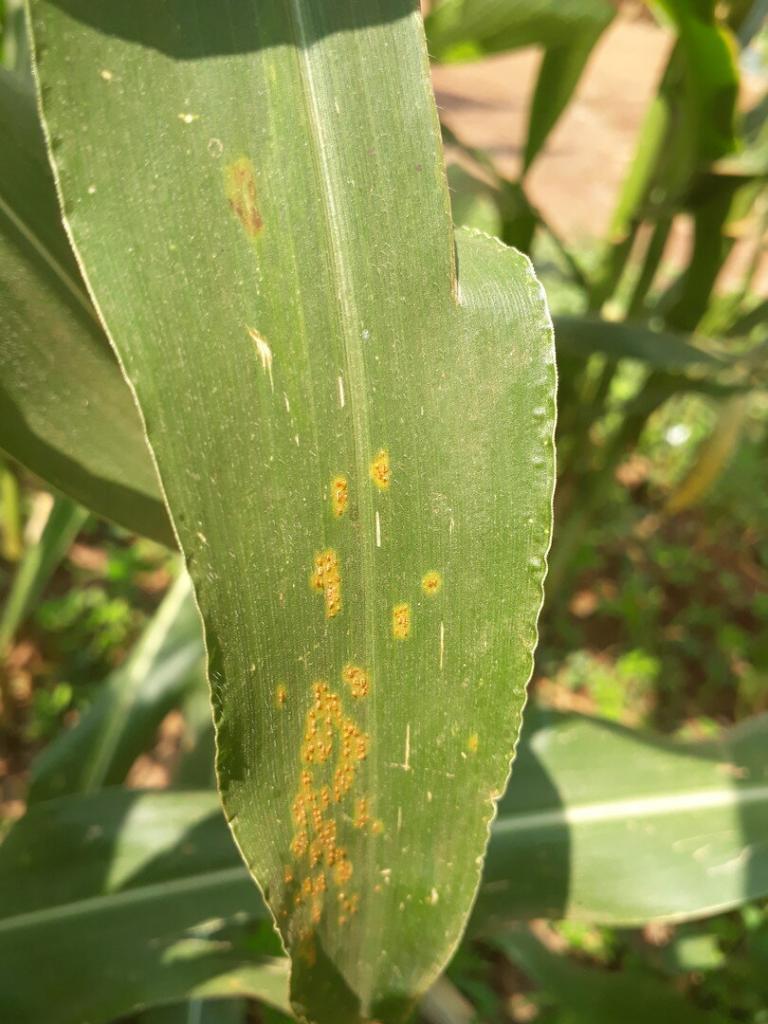
Northern leaf blight
Northern corn leaf blight (NCLB) is a fungal disease that often emerges where corn is grown year after year in the same field, especially where there is reduced tillage. NCLB favors high humidity conditions, but it has difficulties developing in extreme temperatures, such as very cold and hot temperatures.
Elliptical, “cigar” shaped symptoms first appear on lower leaves and move up the leaves as time passes. Severe yield loss is expected when outbreaks occur before the silking phase.
NLCB stays dorm in infected plant parts until weather conditions are favorable. NCLB infects newly planted corn through splashing water. Preparing the land with tillage practices and removing the previous season’s corn residue are essential for prevention. The presence of standing water will promote the spread of NCLB. Make an effort and improve areas on the field where water tends to accumulate and form puddles. If possible, cover the ground with polyethylene sheets to reduce water evaporation from the soil.
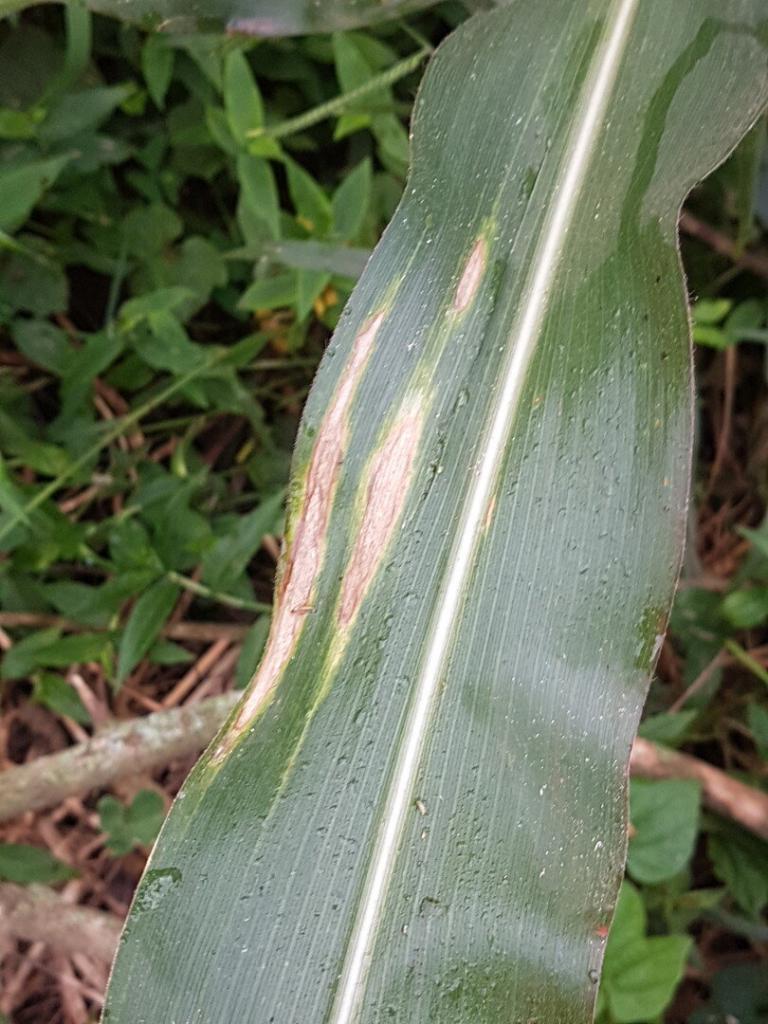
Eyespot
Eyespot is a fungal disease that is caused by the fungus Aureobasidium zeae. The pathogen overwinters in the residue from corn and therefore make it a routine to clean the field after harvest. Treatment is rarely warranted for eyespot in corn.
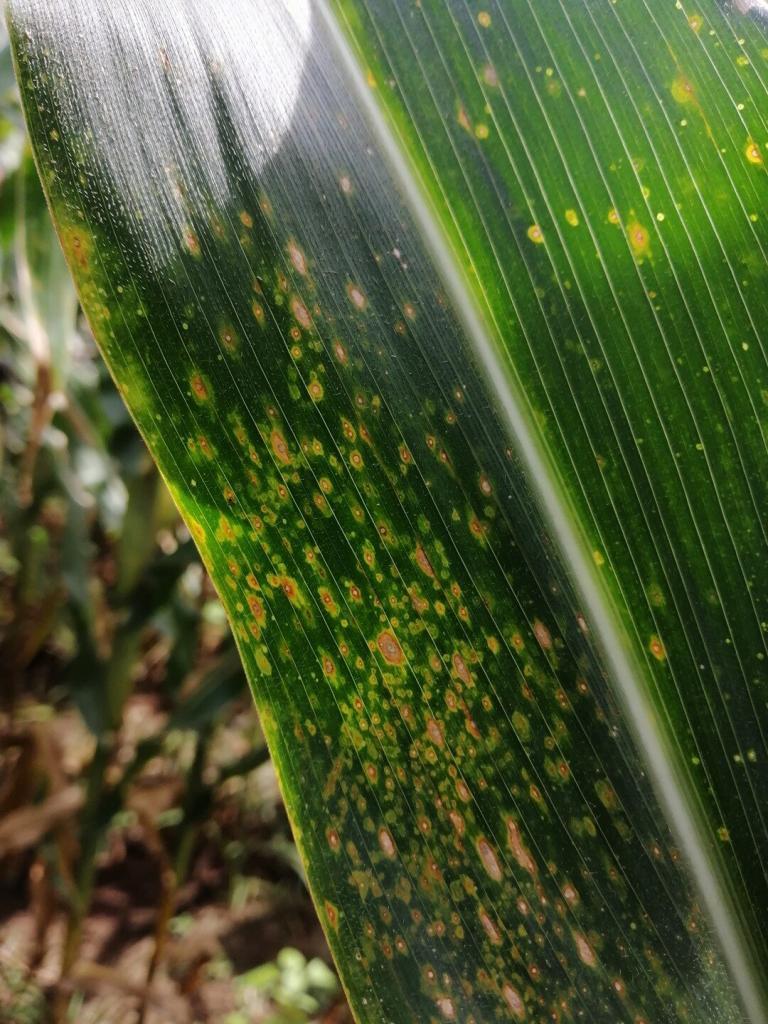
Head smut
Head smut of corn is caused by the fungus Sphacelotheca reiliana. When scouting look for ears and tassels that were replaced with smut sori filled with teliospores.
This fungal disease can be common in certain areas. It is advised to treat the seeds with fungicides in such cases.
Anthracnose
Anthracnose in corn is a foliar disease that could be common in fields if they have not been left with corn debris from the previous year. Leaf spots typically emerge on lower leaves during wet, cloudy weather. Symptoms, which are easily overlooked at first, can look like small oval/elongated water spots on leaves. The spots form become tan with light orange to red borders. These spots coalesce and cause leaf blight. You may also notice circles of tiny black dots in the middle of blighted spots – these are fruiting bodies of the fungus. This fungus may also cause severe top dieback and stalk rot.
Other things to be aware of while scouting
- Check for nitrogen and potassium deficiency by looking at the bottom leaves of plants.
- Plants might turn purple if the pollination or kernel formation was unsuccessful.
- Drought-like conditions can cause plants to flower earlier than expected. In addition, such conditions can cause a delay in the silk emergence. Irrigation should be provided if possible. Poor anthesis or pollen shed are other symptoms of drought stress.
Summary
We emphasized the importance of crop monitoring during corn reproductive stages. Monitoring fields with satellites can make our lives simpler as they can help us identify the diseases that are affecting cornfields and the nutrient deficiencies in them. This will help us identify the areas where we need to take measures for prevention. Satellites can also be used to monitor a large number of fields, which is not possible with manual monitoring. This will allow us to get early warnings and exact locations of any potential problems.
